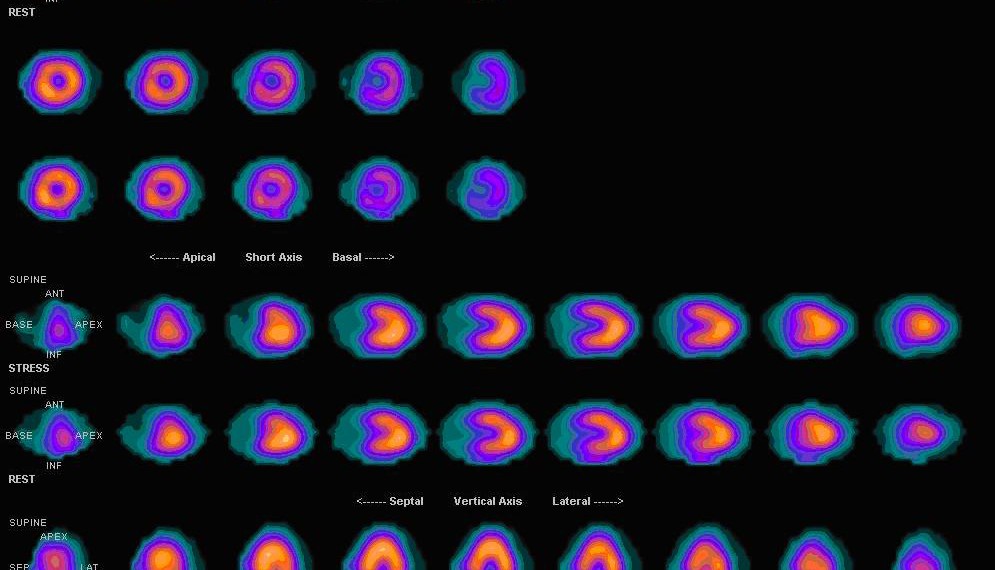Three Methods of Cardiac Stress Testing:
Cardiac Stress Testing: Cardiac Stress testing evaluates the possibility of coronary disease in patients. Myocardial perfusion is measured for evidence of ischemia ( inadequate blood flow to the heart muscle) and/or infarct (prior heart attack), as well as cardiac function by measurement of the left ventricular ejection fraction (LVEF) and wall motion.
1. Persantine Cardiac Stress
One of the Nuclear Imaging we provide when the patient is unable to exercise, has an abdominal aortic aneurysm (AAA), a left bundle branch block (LBBB) and if taking a Beta Blocker medication that blunts the heart rate response. Persantine increases CBF by allowing the natural Vasodilator Adenosine to accumulate. If there is a clinically significant coronary stenosis blood flow to that area, cannot increase and a relative stress defect not present in the rest image will appear.
2. The Exercise Cardiac Stress
Treadmill exercise increases heart rate and systolic blood pressure (SBP) to produce greater Myocardial demand for coronary blood flow (CBF) supply. Supply usually matches demand, but when demand outstrips supply, Ischemia occurs and a stress defect appears that is not seen in the rest of the image. Blood flow cannot increase and a relative stress defect not present in the rest image will appear.
3. Dobutamine Cardiac Stress
Used when the patient cannot exercise secondary to asthma or other bronchoconstrictive disease with expiratory wheezes. Dobutamine increases CBF demand by increasing heart rate. It may also increase SBP, but at higher doses, the SBP usually tends to fall and the Trendelenberg position is needed. There is greater frequency of arrhythmia. A stress defect indicates that CBF demand was greater than the available supply and caused ischemia.
Two Methods of Stress Echo
1. Stress Echo
with treadmill exercise, is a method to evaluate left ventricular regional wall motion (RWM) for ischemia in patients with good echo-windows. This method of cardiac stress with imaging is especially valuable for pregnant or nursing women, in whom you do not wish to expose the embryo or nursing infant to even a small amount of radiation or claustrophobic patients who require a cardiac stress test with imaging.
2. Dobutamine Echo-Stress
An alternative to cardiac for claustrophobic patients with bronchoconstrictive disease with expiratory wheezes. Dobutamine is infused intravenously and titrated to a higher dose every three minutes to achieve a targeted heart rate. In both the exercise and Dobutamine stress echo tests, increasing CBF demand RWM will increase until demand outstrips supply and then ischemia occurs as indicated by a decrease in the RWM.

